Wood Fired Science
We provide a wide range of professional services to meet your needs. We promise to provide every service with a smile and to your highest level of satisfaction.
Why a Wood Fired Oven?
A wood fired oven is the perfect cooking machine for every and any culinary delight. It’s a marvelous method of cooking used by man for thousands of years, dating way back beyond the Romans. Wood burning ovens, kilns and other cooking like instruments have been found in the by archaeologists in nearly every ancient civilization, along with evidence of a whole feast of different cuisines available in mass to all. These included all sorts of hearth bread baked by bakers unmatched in skill even until now. In todays modern times and with the availability of tomatoes the wood fired pizza is of course the most popular and fasted foodstuff to be cooked in a wood fired oven. The beginnings of the wood fired pizza originate from the famous and beautiful region of what is now known in our modern era as Naples, Italy.
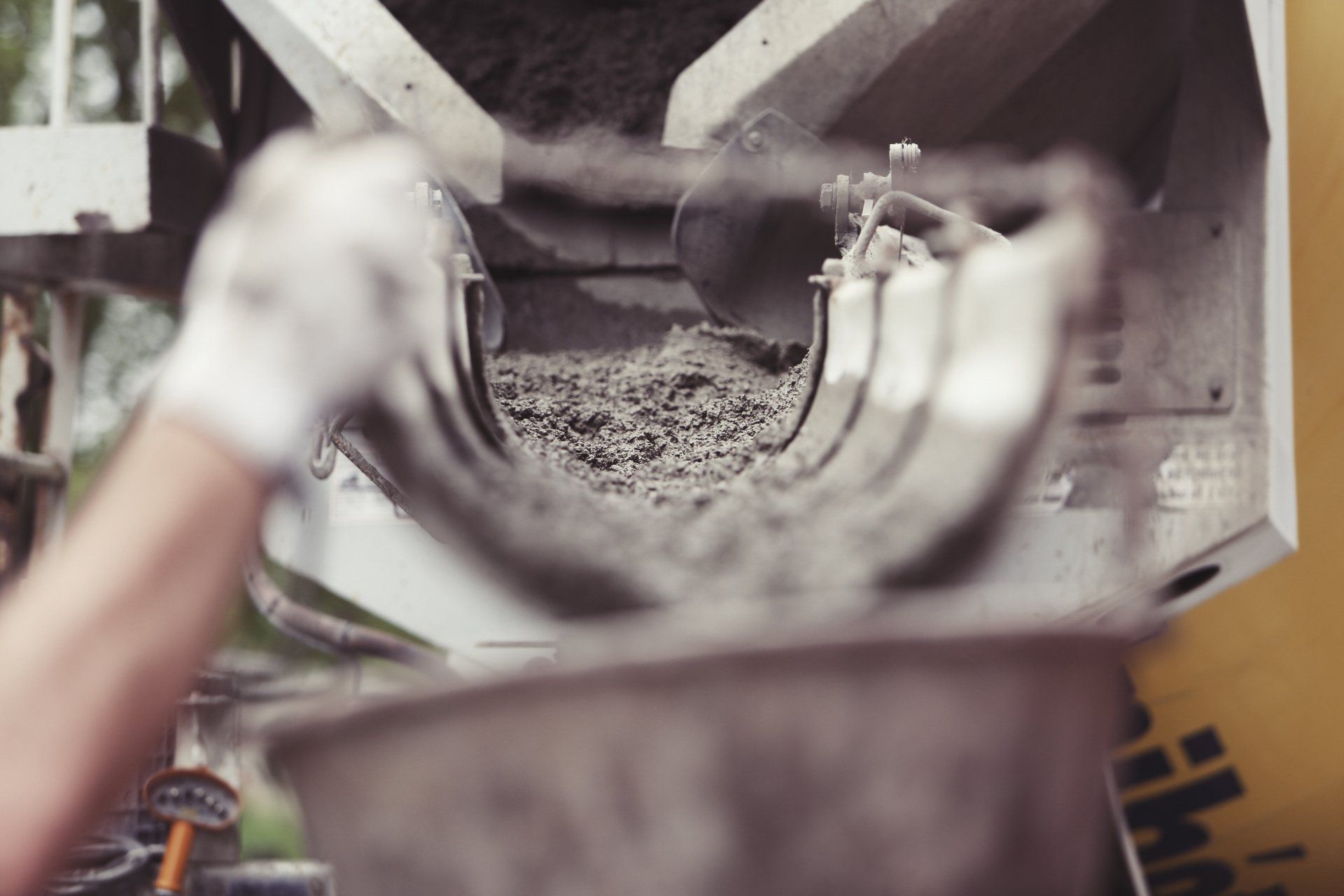
Materials In Construction
What Are They Made From?
There are a whole range of different methods and materials wood fired pizza ovens can be made from. The best quality ovens are constructed using superior refractory concrete and high levels of insulation. Some of the most basic and light weight ovens are made using rudimentary materials like clay, mud, chicken wire and do not have the key refractory content or any insulation. Light weight ovens may cook a pizza over time but will certainly not sustain any sort of decent pizza cooking temperature of around 400-500C or be suitable for use on the road in mobile units.
The key to the exact science of how a good quality pizza oven works comes down to level of heat retention supplied by the quality of the refractory material and amount of insulation used durning the oven construction. Insulation is one of the most important factors when considering the oven you use. If there is insufficient insulation then the oven will take far longer to reach temperature of 400C (if it reaches it at all) , will use far more fuel and will cool down very rapidly. The ovens we use are so well insulated that they reach 400C in about 30-90mins (depending on size) no matter the weather and will stay hot for a day or two, with the exterior of the oven staying cold to touch.
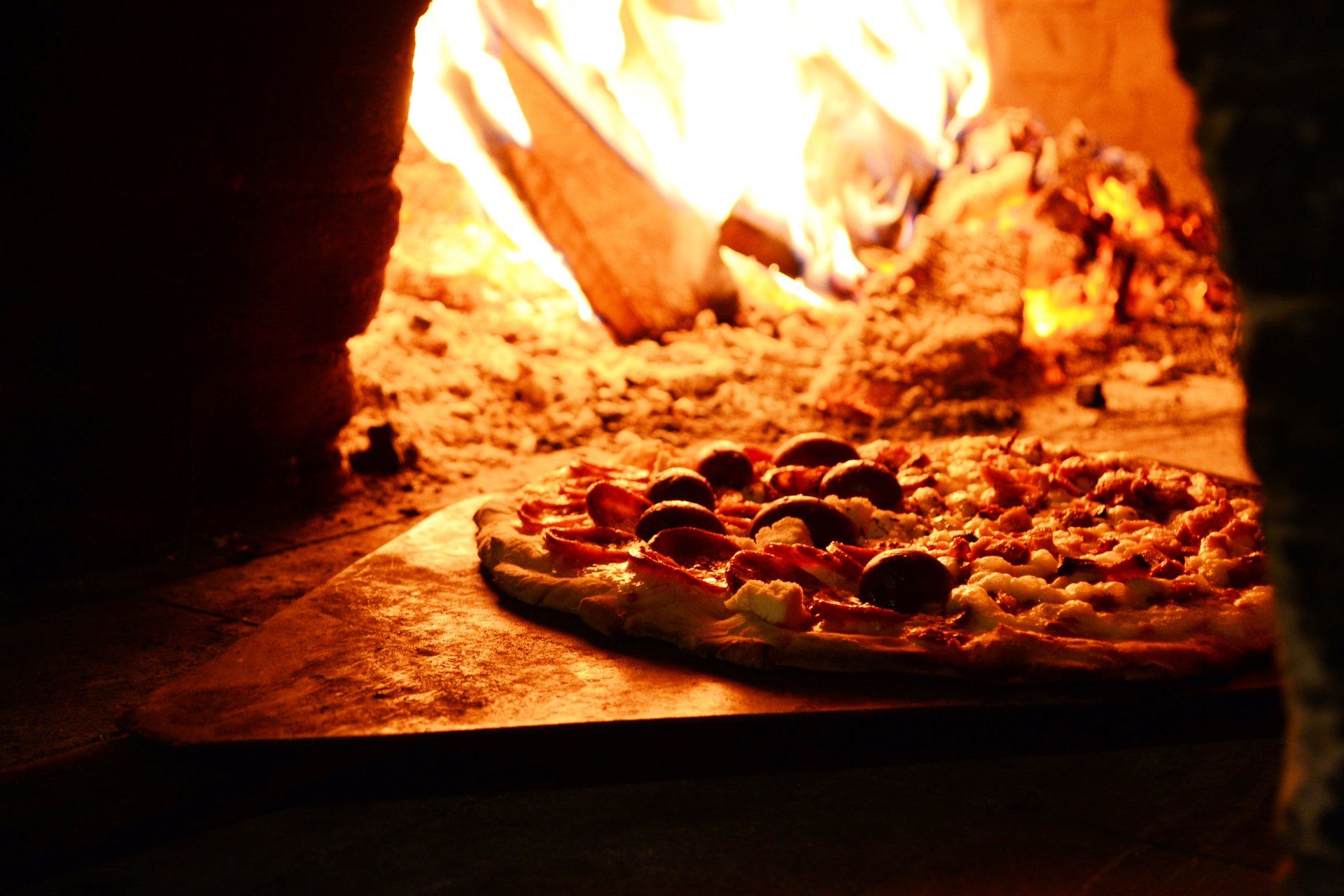
The Cooking Magic
Wood burning ovens operate in a completely different way than any other oven, including a pizza stone in a conventional oven, a commercial deck oven, pizza on a grill, or BBQs. The difference is that wood-fired ovens bake a pizza three different ways – all at the same time. They use reflected heat, convection heat and conductive heat to bake the perfect pizza in about 90 seconds. The three cooking components work together in harmony so that the crust, the cheese, the sauce, the topping and the olive oil are all perfectly cooked – at exactly the same time.
Reflective Heat -The flame from a live fire is bounced off the dome onto your pizza, baking the pizza from above, and fusing the sauce, cheese and oil to a wonderful rich brown color and deep flavor. This reflective heat is hot enough to “cook” a fresh tomato sauce on top of the pizza.
Raditant/Conductive Heat. - As your pizza oven warms the thermal mass of it walls absorbs the heat from the fire and radiates it back into the domes vault . The floor of any pizza oven acts like a sponge for heat. Good Quilaty commerical pizza oven cook floors will have a superior thermal mass, so hold on to heat far more effectivly dying nad after the cooking process. The high quality refractory materials used on Dragon Oven pizza ovens store and then return the heat upto 2 days after the initial fire.
Convection Heat - Air circulates around the oven like any normal room. Except in this case the air is around the cook floor is heated in excess of 450C when at optimum. The air at the top of the pizza oven around the very top is normally super heated, somewhere around 600-900C. This super hot air traps its self and helps act like a invisible blanket trapping the "cooler" air of 400-500C. You will notice if you raise your pizza to the top of the dome, its cook very very quickly or sometimes will even catch fire.
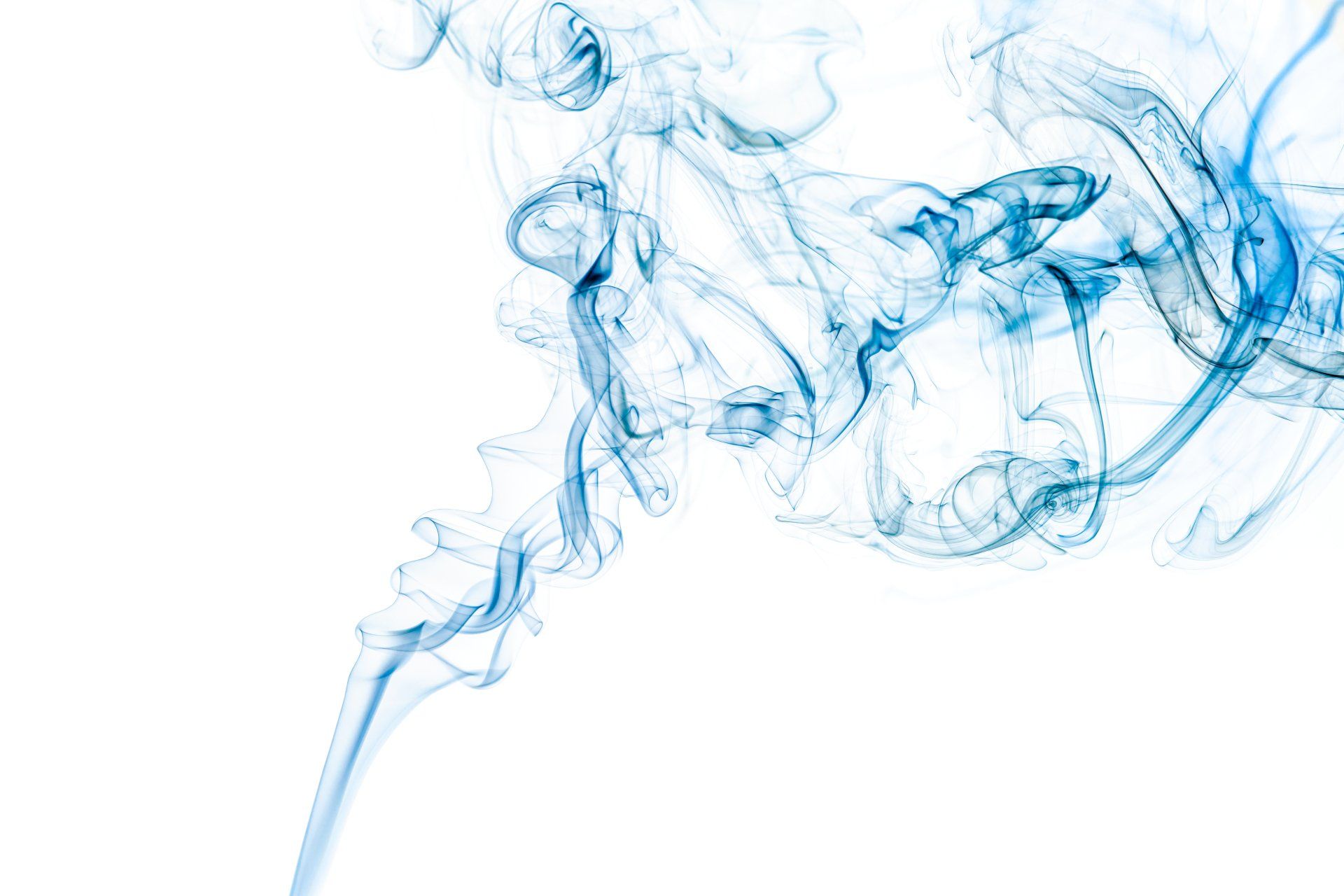
Air & Flue Pressures
Oven Draw/Draft
The word “Draft” refers to the hot air movement that circulates in your pizza ovens exhaust System, moving from the oven to the out of building or flue system, and carrying with it the combustion residues. The draft is a natural phenomenon. Hot air weights less then cold air, causing it to rise. This is why the higher the temperature in the exhaust system, the stronger the draft. It is also important to say that the “tunnel effect” created by the exhaust system contributes to increasing the draft effect. This is why chimneys that are excessively long often create excessive draft, while chimneys that are abnormally short will have an excessively low draft. The following are often symptoms of a draft problem:
+ Excessively dirty
+ A fire that has a tendency to die quickly when the oven door is closed
+ A pizza oven that does not heat up enough or very slowly.
Negative Oven Pressure
“Negative pressure” can be seen as a “reverse draft”. That is air will circulate from the chimney toward the interior of the building. Negative pressure is often what causes smoking problems in general, negative pressure is the result of either one or a combination of the three factors explained below:
A cold chimney. Cold air, which is heavier than hot air, has a tendency to go down the chimney and create the effect of a “clog”. This explains why an oven that has not worked for a long time and which chimney is very cold will sometimes be hard to light and cause smocking problems.
A “vacuum effect” in the room or building. The air in a building is constantly moving. Hot air rises, cold air moves down. Air can also be mechanically expelled outside of the building with the use of air moving device, such as a range hood, air exchanger, a dryer, a bathroom fan, etc. Furthermore, air goes in and out of the building through cracks, doors, windows, etc. If air leave a room without being replaced, a “vacuum effect” is created. Therefore, if a building is well insulated and all windows are closed, the room will source its air through the easiest alternative route, which is often your ovens exhaust system. This creates a negative pressure in your exhaust system. You now understand why it is often suggested that a window be slightly open in the room where the oven is located. This enables the room to easily source its air from outside the building without searching for an alternative route. The vacuum effect can amplified when your oven is located in the basement. This is due to the fact that your house itself acts like a chimney. Since hot air will rise to upper floors, it will “draw” air from the basement of the house. This phenomenon is called the “chimney stack effect”.
Wind can also be a third cause of negative pressure. When your oven is located near a structure which height is superior, wind currents can create an interference with your chimney, leading to negative pressure problems.
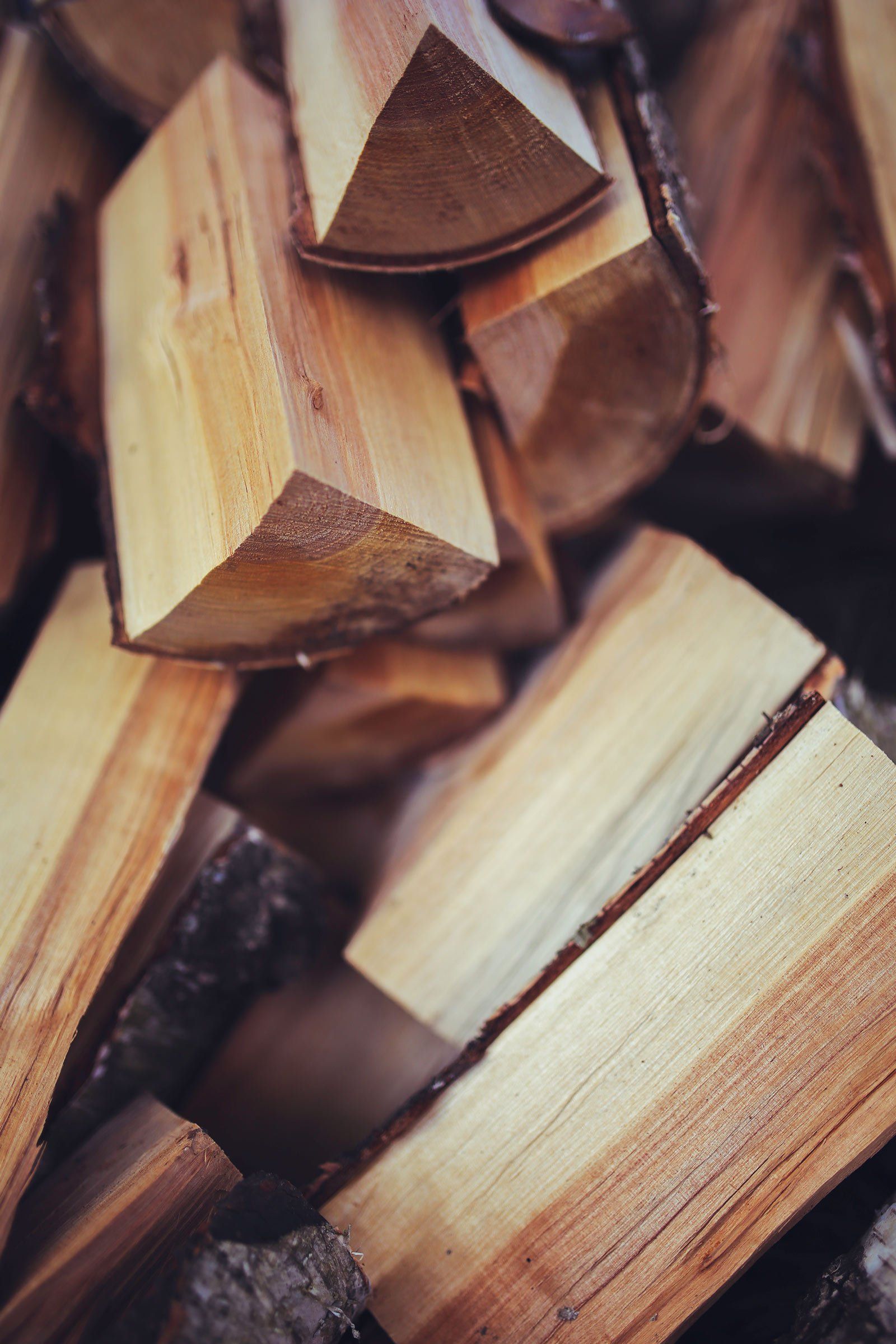
Wood Types
A wood fired oven is designed to burn wood only; no other materials should be burnt. Waste and other flammables should not be burnt in any wood fired oven. Any type of seasoned or kiln dried wood may be used in a oven. But specific varieties have better energy yields than others. Never use chemically treated wood, or wood that has been painted.
HIGH ENERGY YIELD WOOD; Oak, Sugar Maple, Beech, Ash, Elm.
MEDIUM ENERGY YIELD WOOD;Red Maple, Silver birch, Alder, Poplar.
LOW ENERGY YIELD WOOD; Spruce, Pine, Fir.
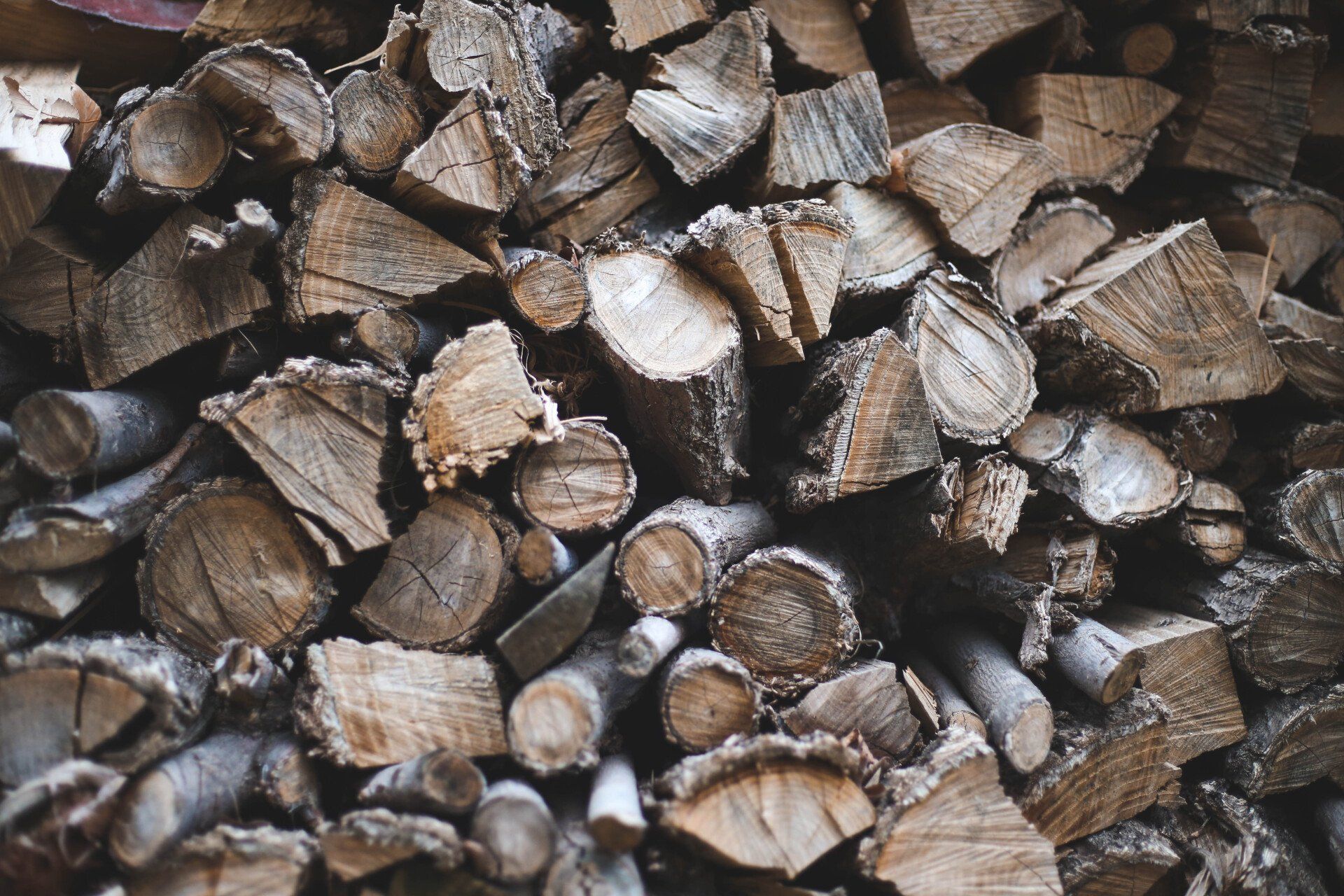
How Dry?
The wood must have dried for 12 to 24 months or kiln dried (recommended) such that the humidity content (in weight) is reduced below 15% of the weight of the log. It is very important to keep in mind that even if wood has been cut for one or two years, it is not necessarily dry. If it has been stored in a poor condition, it may even rot instead of drying. The vast majority of the problems related to the operation of a wood ovens and wood burning stoves are caused by the fact that the wood used was too damp or had dried in poor conditions. These problems can be:
+ Ignition problems
+Creosote build-up causing chimney fires
+Low energy yield ( low heat )
+Incomplete log combustion.
Smaller pieces of wood will dry faster, All logs exceeding 15cm (6”) in diameter should be split. The wood should not be stored directly on the ground. Air should circulate through the core. A 60cn (24”) to 70cm (28”) airspace should be left between each row of logs, which should be placed in the sunniest location possible. The upper layer of wood should be protected from the element but not the sides.
TESTING YOUR WOOD - When the oven is thoroughly warmed. Place one piece of split wood parallel to the door on the bed of red embers. If ignition of the wood is accomplished within 90 seconds from the time it was placed in the oven, your wood in correctly dried . if ignition takes longer, your wood is damp. If your wood hisses or spits or vapour escapes at the ends , your wood is soaked or freshly cut. Do not use this wood in your oven. Large amounts of creosote could be deposited in your chimney and crack the floor.
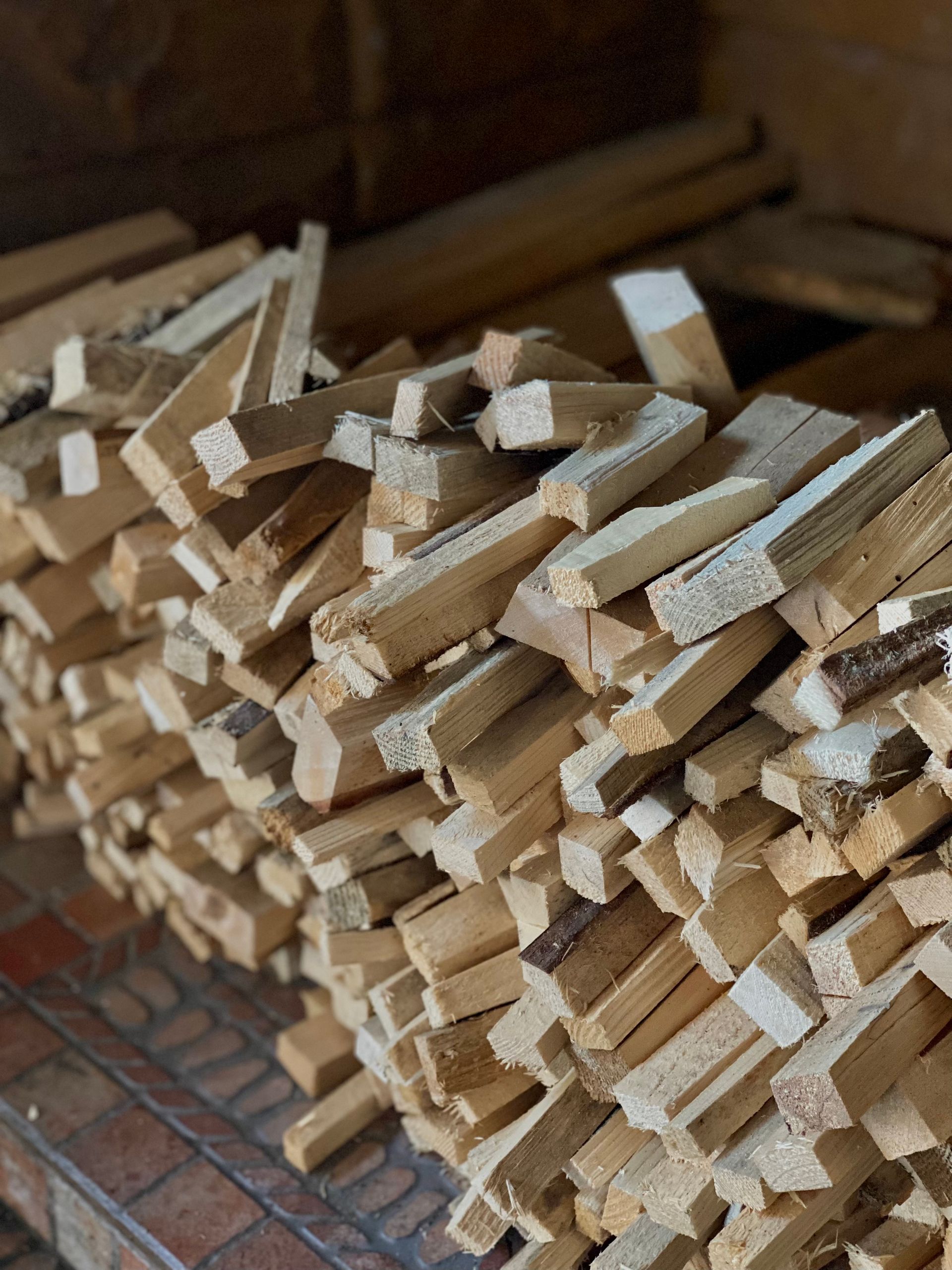
First Fires
THE FIRST FIRES
A new pizza oven needs to be cured to preserve its quality, Curing can take upyo 7 days. Make sure that there’s enough air circulation while curing the oven. Consulate the operating instructions on how to fully cure your particular oven over the appropriate time frame.
IGNITION
Place several rumpled sheets of paper in the centre of the oven chamber (oven dome). Place 8 to 10 pieces of small dry kindling wood over the paper in the form of a tent. No chemical product should be used to light the fire. Twist together a few sheets of news paper into a torch. Light up the torch and hold it as close as possible to the mouth of the chimney chamber to warm up the chimney.
Once the up draft movement is initialled, you are ready to ignite the oven by lighting the paper and kindling wood in the oven dome. We advise you to supervise this, in order for good combustion, to be established.
What People Say About Us

“Great product. We love working with it!”
MashIt
“Amazing service. Can’t wait to find out what’s next!”
FabuFit
“Not sure what I did before discovering this Product. It’s super!”
YesSuits
Contact us any time
Contact Us
We will get back to you as soon as possible
Please try again later

